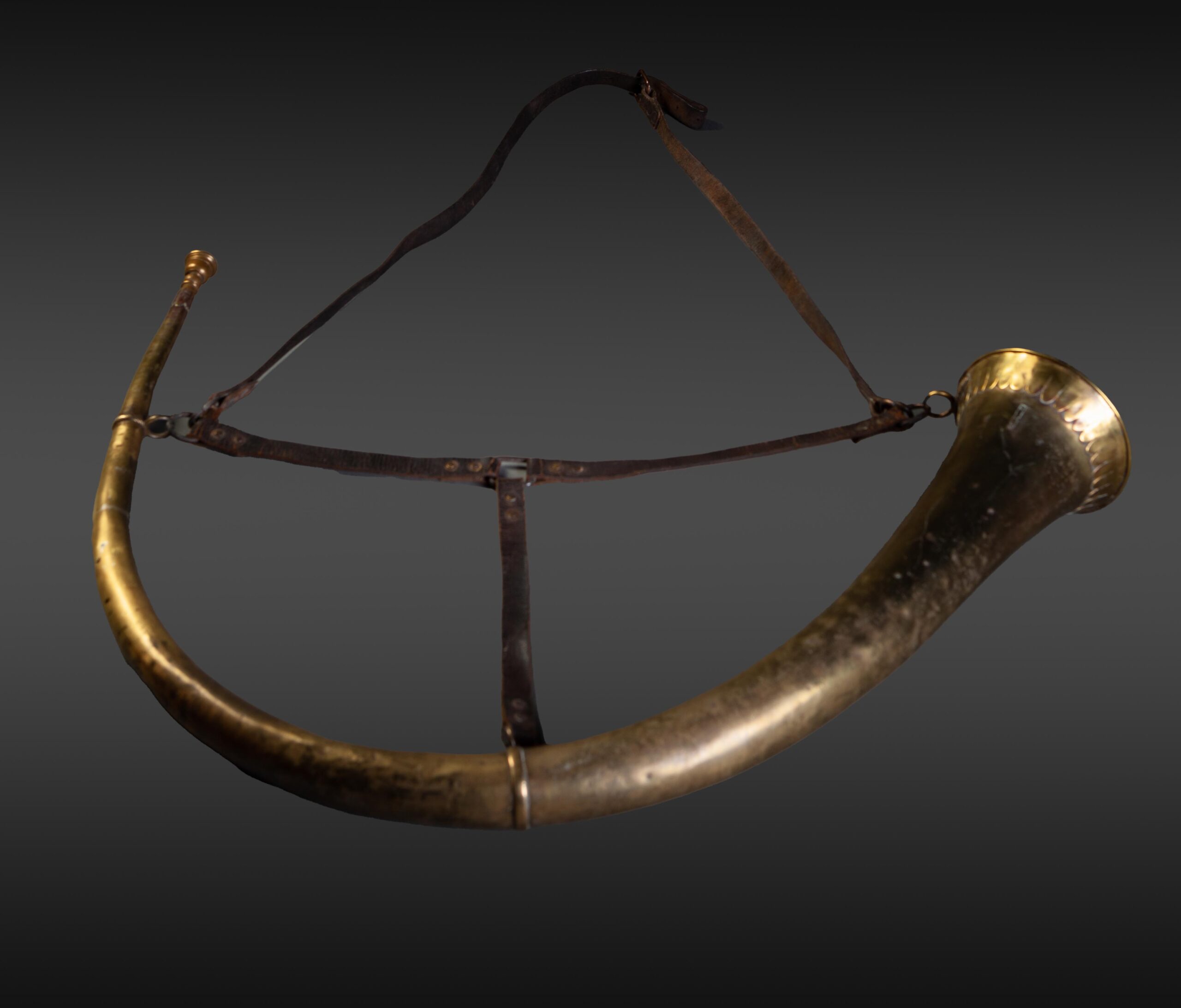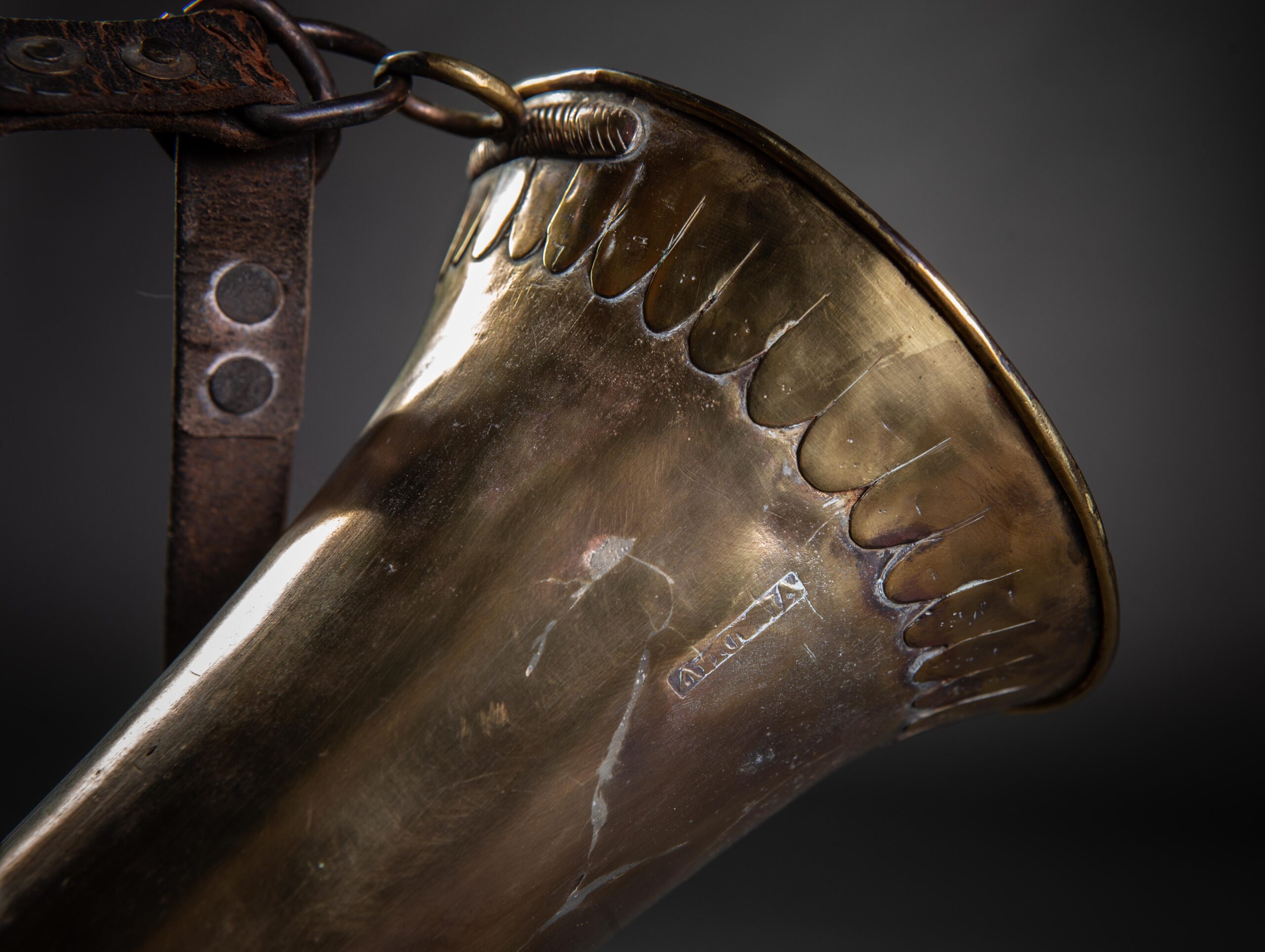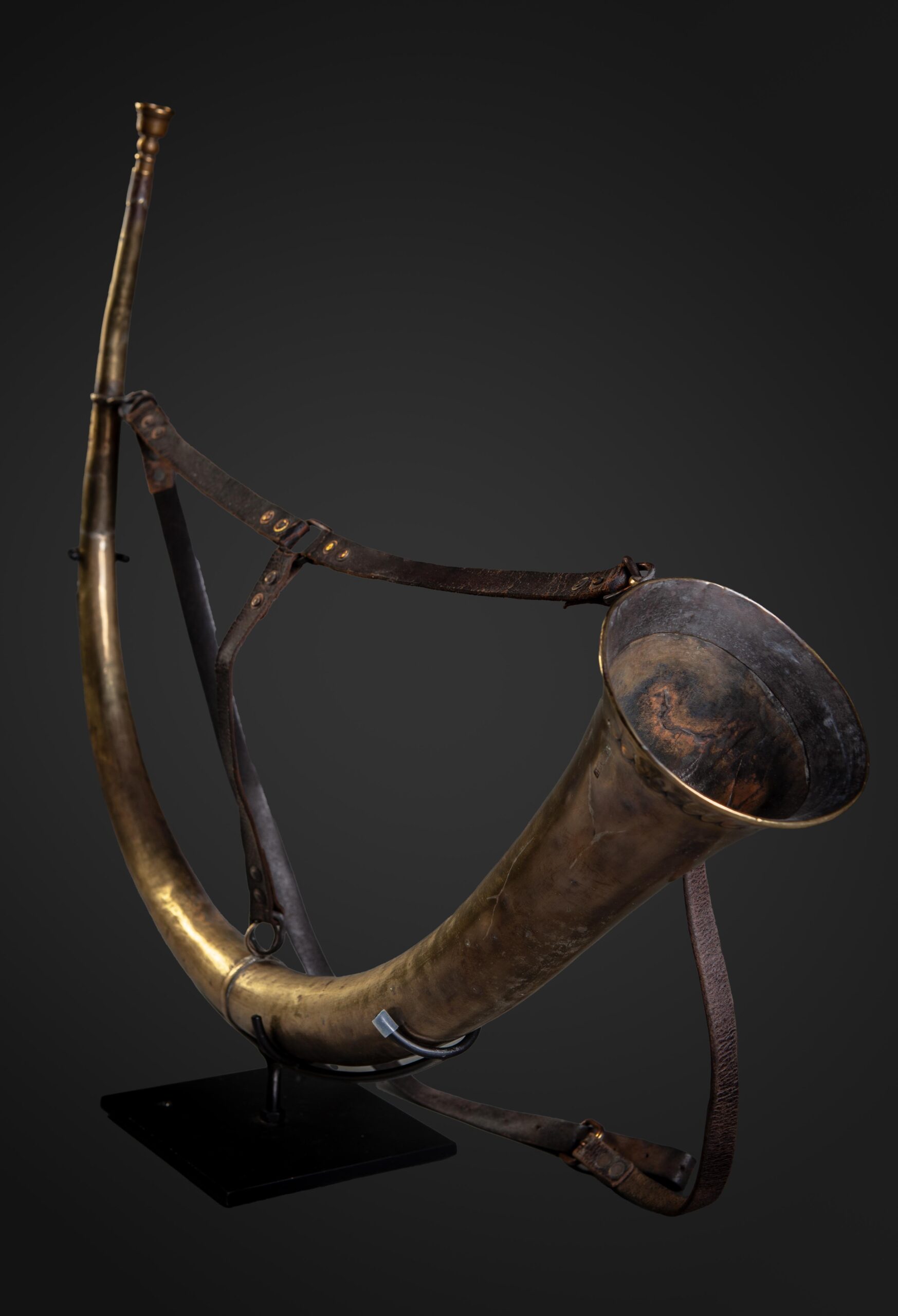HORN
16th – 17th century.
Stamped “VILLEDIEU” on the bell.
Horn mainly used for hunting, made of a sheet of brass in the shape of a half-moon.
The stamp “VILLEDIEU” does not relate to the name of the craftsman who made the instrument but to the corporation of brass beaters from the Norman town of Villedieu, which became “Villedieu-les-Poêles” (V. the pans) in 1962. The first Documents relating to brass working and boilermaking date back to the 13th century. From the 16th century, following the arrival of founders from Lorraine, corporations became widespread. They ensure the organization of crafts, the training of workers, the maintenance of the quality of work, discipline, etc.
The thickness of the materials, the assembly and the traces of burnishing visible on the surface of the instrument are characteristic of the period. Brass polishing will only appear later.
NB: Restorations have been carried out on a few cracks and on the bell (garland). The missing leather straps have been replaced.
Provenance: Werner Flachs Collection.
Bibliography: Das Jagdhorn, seine Geschichte von der Steinzeit bis zur Gegenwart. (The hunting horn, its history from the Stone Age to the present day.)
The Paris Philharmonie Museum has a small horn of the same origin, coming from the Clapisson collection (1808-1866) and mistakenly attributed to Boisset de Villedieu in the 1875 inventory.


